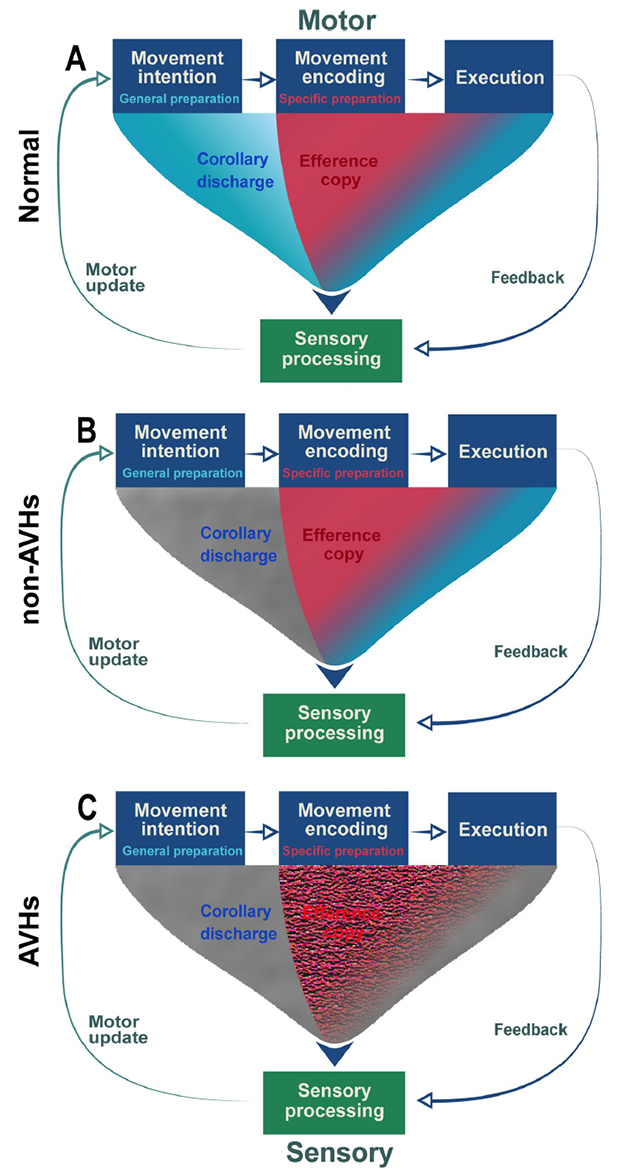A new study reveals a missing area of brain activity in the minds of people with schizophrenia who hear voices.
The analysis of brain wave data suggests a combination of two neurological functions could trigger auditory verbal hallucinations.
Researchers from China found evidence of a breakdown in the ability to prepare the senses for specific words to be spoken. This on its own, however, isn't enough; another area that filters our brain's internal chatter is also enhanced in those with schizophrenia who experience unsettling auditory hallucinations.
Without the self-sound suppression along with the enhanced internal noise-associated signals, things can clearly get rather jumbled up in our minds.
"People who suffer from auditory hallucinations can 'hear' sounds without external stimuli," the team explains. "Impaired functional connections between motor and auditory systems in the brain mediate the loss of ability to distinguish fancy from reality."
Neuroscientist Fuyin Yang from Shanghai Jiao Tong University School of Medicine and colleagues examined the brains of 20 patients diagnosed with schizophrenia who experienced auditory hallucinations, and compared them to another 20 patients who were also diagnosed with schizophrenia and had not experienced hallucinations.
These patients were all taking antipsychotic medications and were in a stable condition throughout the experimental period. Earlier results from a group of people not diagnosed with schizophrenia were used as a control.
Comparing the brain activity data from electroencephalograms across the three groups of patients who were asked to hear and then speak a short, pregenerated syllable revealed the stark differences.
Both groups of schizophrenia patients showed comparatively reduced activity associated with our brain's ability to predict the sound of our voice prior to our body uttering a single word. Known as a corollary discharge, this function typically gives our senses a chance to anticipate sounds as self-produced, and not treat them external.
This difference has also been seen in mouse models of schizophrenia.
But only the patients who reported hearing voices also had a hyperactive efference copy – the motor signal that instructs our bodies to speak, which the team describes as an internal auditory representation.

In the healthy controls and schizophrenia patients who don't have auditory hallucinations, this signal is only enhanced around the syllable someone is prepared to say. But for those that do hear voices, the enhancement is more generalized, essentially increasing random internal brain chatter.
"Imprecise activation function of efference copy… results in the varied enhancement and sensitization of auditory cortex," the researchers write in their paper.
So it appears that auditory hallucinations arise when the uninhibited corollary discharge misinterprets the neural activity caused by the failure of our brains to specify our internal signal to speak, Yang and team explain.
This leaves some people struggling to distinguish between external voices and their own thoughts, blurring the line between their internal and external realities.
With this new understanding of the mechanisms behind these auditory hallucinations, we can hopefully develop better treatments.
This research was published in PLOS Biology.
Disclaimer: The copyright of this article belongs to the original author. Reposting this article is solely for the purpose of information dissemination and does not constitute any investment advice. If there is any infringement, please contact us immediately. We will make corrections or deletions as necessary. Thank you.
